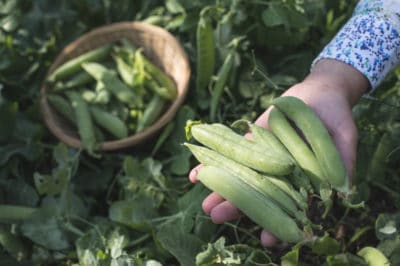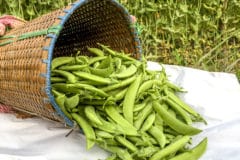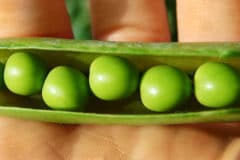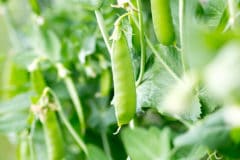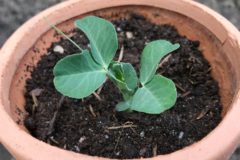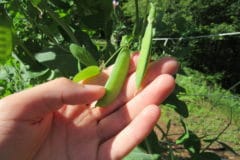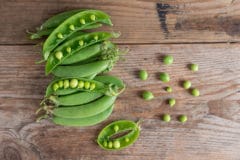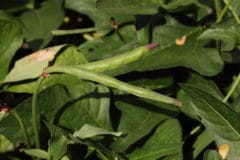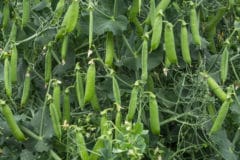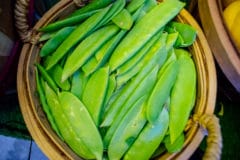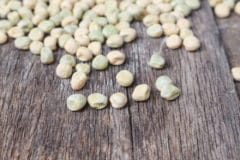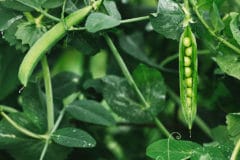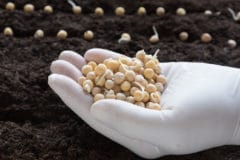English Peas
The English Pea is thousands of years old. This pea is grown only for its fat inner seeds, the vegetables we know as ‘peas.’ The pod of the English pea or garden pea is inedible.
This type of pea typically has a lifecycle between 55-70 days depending on the variety. Pods should be picked when they are fully rounded out and plump, but before they start to dry. Use two hands for picking to avoid damaging the vines.
Typically these peas will give multiple harvests over a week or two. Picking encourages more production and stimulates the maturing of younger fruits.
- Green Arrow – Dark Green, Resistant to Mildew and Wilt, 62-70 Days
- Little Marvel – Semi-Dwarf, Award Winning, 62 Days
- Purple Mist – Purple Pods, Multi-Purpous Pea, 80-85 Days
Snap and Snow Peas
Edible-podded peas like the snow pea and the snap pea are slightly different when it comes to the harvest. Mechanically the harvest is the same as an English pea. However, because the pods are edible the peas can be picked at any time.
Snow peas are not grown for their seeds. The sweet, flat pods are what is eaten. These pods are best harvested young and tender when they are less fibrous. Pick snow peas before they have rounded out when they are still flat.
Snap peas have edible pods, but they also produce seeds that can be dried or frozen as peas. Pick snap peas when they have rounded and the seeds inside are fully developed. Instead of being shelled immediately, these peas can be stored and eaten pod and all.
- Cascadia Snap Pea – Sweet and Crunchy, Mildew Resistant, 67 Days
- Super Sugar Snap Pea – 6 Feet Long, Sweetest Snap Pea, 62-70 Days
- Oregon Giant Snow Pea – Large Pods, Very Sweet, 70 Days
- Dward Grey Sugar Snow Pea – Attractive Flowers, Slender Pods, 66 Days
Southern Peas
Southern peas include plants like Black Eyed Peas and Purple Hull Peas. Unlike cool-season peas, southern peas are grown in the heat of summer.
Southern peas ripen much like beans and contain more starches than other peas so they are less sweet. They are harvested green off the vine or bush, shelled, and dried. You can also allow southern peas to dry on the plant.
